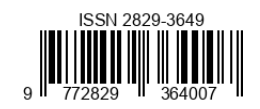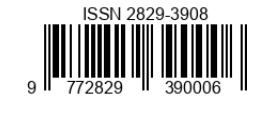Legal Responsibility of Medical Personnel in Cases of Malpractice in Telemedicine
DOI:
https://doi.org/10.56910/literacy.v4i2.2467Keywords:
Legal Liability, Legal Reform, Malpractice, Patient Protection, TelemedicineAbstract
The COVID-19 pandemic has accelerated the adoption of telemedicine in Indonesia as a cross-regional alternative to conventional healthcare services. This technology-based medical practice offers increased accessibility and efficiency, yet it also presents legal challenges, particularly concerning physicians' liability in malpractice cases. This study aims to examine the legal responsibility of physicians in post-pandemic telemedicine using a normative juridical approach. It analyzes six key areas: the innovation and legal challenges of telemedicine; the concept of malpractice and legal liability; regulatory dynamics in Indonesia; malpractice risks in virtual practice; international legal comparisons (United States, United Kingdom, Singapore); and recommendations for legal reform. The method used was a normative legal study with statute and comparative approaches. The secondary data used consists of primary legal materials (laws and regulations), secondary sources (academic literature), and tertiary materials (dictionaries/encyclopedias). The data was then systematically reviewed with a descriptive-analytical approach. The findings indicate that although Law No. 17 of 2023 and Government Regulation No. 28 of 2024 recognize telemedicine practice, technical regulations have led to legal uncertainty for patients and physicians. In contrast, other countries have already established legal frameworks that emphasize doctors' responsibilities in virtual care as equivalent to those in in-person settings. In conclusion, Indonesia must successfully formulate implementing regulations governing service standards, digital informed consent, complaint mechanisms, and the delineation of responsibilities between medical practitioners and platform providers. Such legal reform is essential to ensure that telemedicine evolves as an innovation aligned with patient rights protection and the principles of legal justice.
References
A. Connelly and M. Serpell, “Clinical negligence,” Anesthesia & Intensive Care Medicine, vol. 21, no. 10, pp. 524–527, 2020. https://doi.org/10.1016/j.mpaic.2020.07.006
A. E. Kusumaningrum, “Analysis of therapeutic transactions as a means of legal protection for patients,” Scientific Journal of World Law, vol. 1, no. 1, pp. 1–17, 2017.
A. Erfanifa et al., “Advantages and Disadvantages of Telemedicine in Medicine: A Review Study,” Journal of Zabol Medical School, 2024.
A. Hutchinson et al., “Perceptions of good medical practice in the NHS: a survey of senior health professionals,” BMJ Quality & Safety, vol. 8, no. 4, pp. 213–218, 1999.
A. L. Fogel and J. C. Kvedar, “Reported Cases of Medical Malpractice in Direct to Consumer Telemedicine,” JAMA, vol. 321, no. 13, p. 1309, 2019. https://doi.org/10.1001/jama.2019.0395
A. M. T. Anggraini, “Legal Protection of Patients in Telemedicine Services: Implementation and Challenges,” KnE Social Sciences, pp. 306–316, 2022.
A. T. H. Ramanda, “Legal responsibility of doctors for online consultations if patients suffer losses,” Yustisia Merdeka: Scientific Journal of Law, vol. 7, no. 1, pp. 1–8, 2021. https://doi.org/10.33319/yume.v7i1.73
A. Yunanto and S. H. Helmi, Criminal Law of Medical Malpractice, Medicolegal Review and Perspective, Andi.
B. Handoyo, SH, MH, “Legal Review of the Enforcement of Medical Malpractice Law in Health Services from a Criminal Law Perspective,” AT TASYRI': Scientific Journal of Muamalah Program, vol. 12, no. 01, pp. 47–62, 2020.
B. Heryanto, “Doctors' Malpractice in Legal Perspective,” Journal of Legal Dynamics, vol. 10, no. 2, pp. 183–191, 2010.
B. I. S. Kainde and I. D. S. Saimima, “Reconstruction of Article 66 Paragraph (3) of Law No. 29 of 2004 concerning the Medical Practice Law Regarding the Procedures for Complaints of Doctors' Malpractice in Indonesia,” Sasana Law Journal, vol. 7, no. 2, 2021.
B. Mueller, “Telemedicine arrives in the UK: '10 years of change in one week',” The New York Times, 2020.
B. S. Santoso, R. T. Budiyanti, and N. Nandini, “Analysis of the use of telemedicine services after the Covid 19 pandemic in Central Java,” Indonesian Journal of Health Management, vol. 12, no. 2, pp. 119–129, 2024. https://doi.org/10.14710/jmki.12.2.2024.119-129
B. Stanberry, Legal and Ethical Aspects of Telemedicine, in Introduction to Telemedicine, CRC Press, pp. 150–167, 2017.
B. T. Muliawan, “Analysis Of The Implementation Of Telemedicine Services In Health Applications In Terms Of Health Law (Case Study On Telemedicine Services Organized By Health Service Facilities, Ministry Of Health And Startup Businesses In The Health Sector),” in Proceedings International Conference On Law, Economy, Social And Sharia (ICLESS), vol. 1, no. 1, pp. 149–168, 2022.
C. R. Cody, “Professional licenses and substantive due process: can states compel physicians to provide their services,” Wm. & Mary Bill Rts. J., vol. 22, pp. 941–?, 2013.
D. Estrada, “Legal Protection for Doctors in Carrying Out Medical Practice Related to Alleged Disciplinary Violations Resulting in Malpractice,” ALADALAH: Journal of Politics, Social, Law and Humanities, vol. 2, no. 2, pp. 137–153, 2024.
D. Haiti, “Doctors' Responsibilities in Medical Malpractice from an Administrative Law Perspective,” Badamai Law Journal, vol. 2, no. 2, p. 206, 2017.
F. N. Aryani and A. Intarti, “Legal Responsibility for Malpractice by Medical Personnel Based on Law Number 29 of 2004 Concerning Medical Practice,” Wacana Paramarta: Journal of Legal Science, vol. 18, no. 1, pp. 51–60, 2019.
F. Nasution and A. L. Ibrahim, “Legal Aspects of Telemedicine and Prevention of Malpractice Risks,” Legal Arena, vol. 17, no. 3, pp. 667–693, 2024.
F. Saigí Rubió et al., “The current status of telemedicine technology use across the WHO European region: an overview of systematic reviews,” Journal of Medical Internet Research, vol. 24, no. 10, e40877, 2022.
G. C. K. Yew, Health Law and Medical Ethics in Singapore, Routledge, 2020.
G. G. Liu et al., “Evidence Based Decision Making on Medical Technologies in China, Japan, and Singapore,” Values in Health, vol. 12, S12–S17, 2009.
G. Nittari et al., “Telemedicine practice: a review of the current ethical and legal challenges,” Telemedicine and E Health, vol. 26, no. 12, pp. 1427–1437, 2020a.
G. Nittari et al., “Telemedicine Practice: Review of the Current Ethical and Legal Challenges,” Telemedicine and E Health, vol. 26, no. 12, pp. 1427–1437, 2020b. https://doi.org/10.1089/tmj.2019.0158
Government Regulation No. 28 of 2024, Legislation, 2024.
H. A. Praise, A. E. Rompis, and R. A. Nurzaman, “Risk based licensing as licensing reform in Indonesia based on Government Regulation Number 5 the year 2021,” Padjadjaran Legal Axis Journal, vol. 3, no. 2, pp. 209–227, 2022.
H. K. Bruhn, “Telemedicine: dos and don’ts to mitigate liability risk,” Journal of the American Association for Pediatric Ophthalmology and Strabismus, vol. 24, no. 4, pp. 195–196, 2020. https://doi.org/10.1016/j.jaapos.2020.07.002
I. Y. Koswara, Medical Malpractice from the Perspective of Doctors and Patients: Study of Indonesian Medical Law and Code of Ethics (KODEKI), Deepublish, 2020.
Indonesian Medical Council, “KKI Regulation No. 74 of 2020 Concerning Clinical Authority and Medical Practice Through Telemedicine,” 2020.
J. L. Rensberger, “Choice of Law, Medical Malpractice, and Telemedicine: The Present Diagnosis with a Prescription for the Future,” U. Miami Law Review, vol. 55, pp. 31–?, 2000.
J. R. H. Tay et al., “A risk based approach to the COVID 19 pandemic: the experience at National Dental Center Singapore,” Frontiers in Medicine, vol. 7, p. 562728, 2020.
J. W. Jones, “The healthcare professional and the Bolam test,” British Dental Journal, vol. 188, no. 5, p. 237, 2000.
L. R. Y. Hwei and G. S. Octavius, “Potential advantages and disadvantages of telemedicine: A literature review from the perspectives of patients, medical personnel, and hospitals,” Journal of Community Empowerment for Health, vol. 4, no. 3, pp. 180–186, 2021.
Law No. 17 of 2023, 2023.
M. A. Romdlon, L. K. Adi, and A. A. Kurniawan, “Telemedicine in Legal Construction in Indonesia,” Kosmik Hukum, vol. 21, no. 2, p. 142, 2021. https://doi.org/10.30595/kosmikhukum.v21i2.10597
M. Brazier and E. Cave, “The practice of medicine today,” in Medicine, Patients and the Law (6th ed.), Manchester University Press, pp. 3–30, 2020.
M. Brazier and S. Fovargue, “Transforming wrong into right: What is ‘proper medical treatment’?,” in The Legitimacy of Medical Treatment, Routledge, pp. 12–31, 2015.
M. Fisk, A. Livingstone, and S. W. Pit, “Telehealth in the context of COVID 19: changing perspectives in Australia, the United Kingdom, and the United States,” Journal of Medical Internet Research, vol. 22, no. 6, e19264, 2020.
M. Intan Sabrina and I. R. Defi, “Telemedicine guidelines in South East Asia—a scoping review,” Frontiers in Neurology, vol. 11, p. 581649, 2021.
M. R. Pontoh, “Criminal law enforcement against medical risks and malpractice in carrying out the doctor's duties,” Lex Crimen, vol. 2, 2013.
M. R. Rustam and P. Sidipratomo, “Malpractice of Telemedicine Implementation in Health Law Perspective,” Journal Evidence Of Law, vol. 3, no. 2, pp. 29–37, 2024. https://doi.org/10.59066/jel.v3i2.649
M. S. Young and R. K. Alexander, “Recognizing the nature of American medical practice: an argument for adopting a federal medical license,” DePaul J. Health Care Law, vol. 13, p. 145, 2010.
M. Widjaja, F. Fahmi, and Y. Triana, “Legal Responsibility of Doctors for Malpractice,” Innovative: Journal Of Social Science Research, vol. 3, no. 3, pp. 5788–5799, 2023.
M. Y. Khanji, A. M. Gallagher, N. Rehill, and R. A. Archbold, “Remote consultations: review of guiding themes for equitable and effective delivery,” Current Problems in Cardiology, vol. 48, no. 8, p. 101736, 2023. https://doi.org/10.1016/j.cpcardiol.2023.101736
Ministry of Health of the Republic of Indonesia, “Circular Letter Number HK.02.01/MenKes/303/2020 Concerning the Provision of Health Services Through the Utilization of Information and Communication Technology in the Framework of Preventing the Spread of Corona Virus Disease 2019 (Covid 19),” 2020.
Ministry of Health of the Republic of Indonesia, “Regulation of the Minister of Health of the Republic of Indonesia Number 20 of 2019 Concerning the Implementation of Telemedicine Services Between Health Service Facilities,” 2019.
National Telemedicine Advisory Committee, National Telemedicine Guidelines of Singapore, 2015.
R. A. Fitriono, B. Setyanto, and R. Ginting, “Enforcement of Malpractice Law Through a Penal Mediation Approach,” Yustisia, vol. 5, no. 1, pp. 148–161, 2016.
R. A. Riza, “Doctors' responsibility towards patients in the event of medical malpractice seen from a civil law perspective,” JCH (Jurnal Cendekia Hukum), vol. 4, no. 1, pp. 1–8, 2018.
R. K. Gobburi et al., “Telemedicine use in rural areas of the United Kingdom to improve access to healthcare facilities: A review of current evidence,” Informatics and Health, vol. 2, no. 1, pp. 41–48, 2025.
R. Rayyan and A. R. M. Siregar, “Legal Certainty in the Implementation of Health Technology: Patient Data Protection and Malpractice,” Politika Progresif: Journal of Law, Politics and Humanities, vol. 2, no. 1, pp. 1–11, 2025. https://doi.org/10.62383/progres.v2i1.1230
R. Siregar, Health Law Teaching Materials Volume I, UKI PRESS, 2020.
R. Siregar, Health Law, Sinar Grafika, 2023.
R. Subekti and R. Tjitrosudibio, Civil Code (KUH Perdata), Pradnya Paramita, 2003.
R. Wootton, J. Craig, and V. Patterson, Introduction to Telemedicine, CRC Press, 2017.
S. D. Council, Ethical Code and Ethical Guidelines, 2016.
S. P. Rowland et al., “Digital health technology specific risks for medical malpractice liability,” NPJ Digital Medicine, vol. 5, no. 1, p. 157, 2022a. https://doi.org/10.1038/s41746-022-00698-3
S. P. Rowland et al., “Digital health technology specific risks for medical malpractice liability,” NPJ Digital Medicine, vol. 5, no. 1, p. 157, 2022b.
S. Soekanto, Legal Research Methods, Rineka Cipta, 2003.
S. Supriyanto, R. S. Agustina, and I. Dwisvimiar, “Legal responsibility of doctors in implementing telemedicine based health services based on Law Number 17 of 2023 concerning Health (study at the Binuang Health Center UPT, Serang Regency),” Journal of Innovation Research and Knowledge, vol. 4, no. 11, pp. 8273–8290, 2025. https://doi.org/10.33319/yume.v7i1.73
T. E. Paterick, “Medical malpractice: An introduction to tort law,” The Journal of Medical Practice Management: MPM, vol. 37, no. 4, pp. 197–201, 2022.
V. Novriansyah, S. Pasamai, and A. Anzar, “Doctors' Liability Due to Medical Malpractice in Civil Law Perspective,” Journal of Lex Generalis (JLG), vol. 2, no. 3, pp. 957–971, 2021.
V. Sulistyani and Z. Syamsu, “Civil liability of a doctor in a medical malpractice case,” Lex Jurnalica, 2015.
Y. A. Mannas, SH, MH, and S. Elvandari, SH, Legal Aspects of Telemedicine in Indonesia, PT. RajaGrafindo Persada Rajawali Persada, 2023.
Y. Firmansyah and I. Haryanto, “Contamination In Covid 19 Sample – The Iceberg Phenomenon and Pandora Box (Law and Sociology Perspective),” Indonesian Journal of Social Technology, 2021. https://doi.org/10.36418/jist.v2i7.199
Y. Firmansyah and I. Haryanto, “Two Dark Sides of Covid 19: The Dilemma Between Transparency of Covid 19 Patient Identity Data and Transparency of Public Data in Order to Reduce Stigmatization: A Sociological Perspective,” Metta: Multidisciplinary Journal of Science, vol. 1, no. 2, pp. 73–85, 2021.
Y. Firmansyah, “A Hospital's Legal Responsibility For Patient Rights During The Covid 19 Pandemic A Review From The Health Sector's Law Regulations,” Indonesian Journal of Social Science, vol. 2, no. 08, pp. 1392–1406, 2021.
Y. Firmansyah, H. Hendsun, and I. Buntara, “Insomnia Incidence During Large Scale Social Restrictions (PSBB) in Jakarta Due to the Covid 19 Pandemic,” HEARTY, vol. 8, no. 2, pp. 76–83, 2020.
Y. Firmansyah, Legal review of telehealth, telemedicine, and teleconsultation in relation to guaranteeing personal data protection, Veteran National Development University, Jakarta, 2022.
Downloads
Published
How to Cite
Issue
Section
License
Copyright (c) 2025 LITERACY : International Scientific Journals of Social, Education, Humanities

This work is licensed under a Creative Commons Attribution-ShareAlike 4.0 International License.







